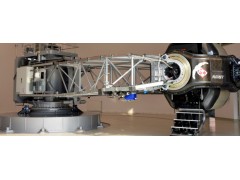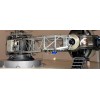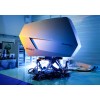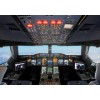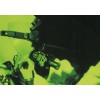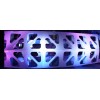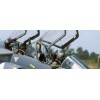Modern fighter aircraft that are currently in operation impose high requirements on G-tolerance and G-protection of the aircrew.
Increasing performance in terms of engine power, airspeed, manoeuvrability, electronic equipment and structural integrity results in the fact that the pilot is becoming more and more a limiting factor in respect to his physiological and psychological tolerance to mission stress and work load.
High agile fighter aircraft of the latest generation are capable of performing super manoeuvres with rapid, multi-axes motions and have significant advantage and superiority in air combat manoeuvres.
However, they will expose the pilots to new combinations of high translational accelerations and rotational motions, leading to further increased physical loads.
Air combat requires pilots to undertake complex system management tasks and make quick decisions under intense physical stress. The current ground simulators, used for pre-flight training, provide pilot cognitive skill training but they have a negative training value in not replicating the physiological environment. This major training shortcoming is most serious in preparing pilots for air combat wher the aircraft will be aggressively manoeuvred imposing significant strains on pilot and aircraft.
G-induced Loss of Consciousness (G-LOC) has been a continuing threat in tactical fighter operations and is still one of the most frequent causes of fatal aircraft mishaps.
Pilots need to possess an adequate degree of mandatory skills for protective, anti-G straining muscular and breathing techniques, anti-G suit exploitation and self-control procedures.
SOLUTION
MODERN HTC TRAINING IMPROVES BOTH AIR COMBAT CAPABILITIES AND FLYING SAFETY. THE HTC HAS TRADITIonALLY BEEN USED FOR PILOT selecION, QUALIFICATION AND REFRESHER TRAINING. NOW THE HTC BEGINS TO BE AN INTEGRAL PART OF MODERN AIR FORCE TRAINING SYSTEMS.
Combining new simulation technology with advanced human centrifuge engineering provides a very cost effective approach to prepare pilots for the mental and physical demands for air combat within visual range. Modern centrifuges reduce Coriolis effects, have good visual displays, and can provide combined cognitive skill and physical capabilities training. Advanced centrifuge systems provide comprehensive, realistic air combat training in a simulator.
The initial exposure to the impact of G was traditionally gained only when flying commenced. In a HTC, students can become used to operating at their peak capacity much earlier than previously. Any student problems can be revealed early and addressed before significant flying has taken place.
Demonstrations of rapid G-onset to Loss of Consciousness with associated symptoms cannot be carried out in an aircraft. It is essential for flying safety that air combat pilots know how to protect themselves against this characteristic of the human anatomy.
With a HTC, G-resistance and G-tolerance can be achieved earlier than it would occur if using only flying training. This leads to a more effective training.
HTC training can provide an early identification of unsuitable candidates for fast jet training.
Continuation training using a HTC incorporating sophisticated medical monitoring equipment can provide early indication of any emerging pilot physical problems that could lead to accidents if experienced airborne.
HTC training allows pilots to build and maintain their abilities to withstand high-G even if aircraft are G-limited, or the current training regime does not permit it.
Current ground instruction builds only cognitive skills. HTC training can build combined cognitive skills and physiological capabilities.
Pilots can be much more proficient at managing complex aircraft systems while under high-G after suitable HTC instruction in anti-G straining and breathing techniques.
Pilots can be trained for high-G manoeuvres in a safe environment, wher their mental and physical performance can be continuously monitored. Corrective instruction can be provided immediately if any shortcomings become evident. This cannot be done airborne.
New air combat aircraft allow complex manoeuvres across combined G-forces. HTC training can replicate this better, preparing pilots for unusual physical stresses not encountered during initial flying training.
BENEFITS
SAVES LIVES - SAVES BUDGET
Improves pilot performance, builds G-resistance and G-tolerance in a safe environment, re-establishes and maintains pilots’ optimum performance levels.
G-awareness training in closed-loop using simulated aircraft configuration during target tracking and simulation of typical combat and missile avoidance manoeuvres.
Execution of tactical tasks in high-G environment has more real operational benefit than any other training system.
Download of Basic Fighter Manoeuvres (BFM) fro frontline aircraft is a considerable cost saving factor and conserves fatigue life on costly front line aircraft.
One training centrifuge costs much less than one modern fighter aircraft and provides an environment-friendly and cost-effective training of aircrew.
HTC training allows the pilot to re-establish and maintain his optimum performance level even when flights are not possible.

